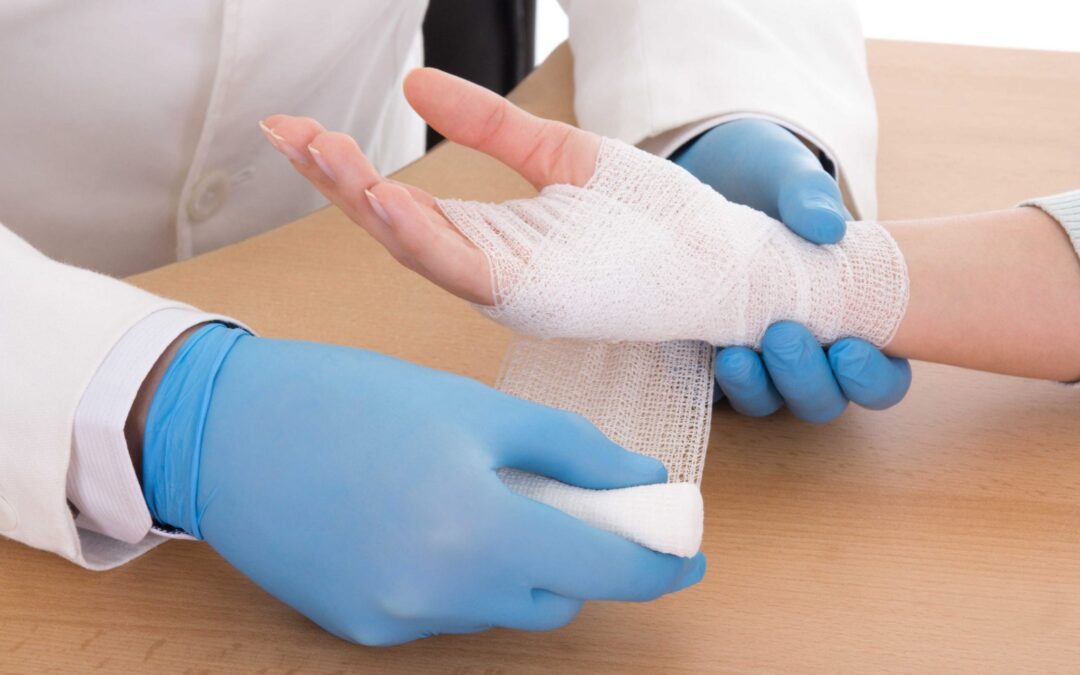Wound care plays a vital role in preventing infections and promoting healing. One essential element in managing wounds is the use of medical dressing. Medical are materials applied to a wound to aid healing, protect against infections, and manage exudate (fluid coming from the wound). In this blog, we’ll explore the different types of medical, their uses, and the proper techniques for wound care.
What is Medical Dressing?
A medical dressing is a sterile material used to cover a wound or injury. Its primary function is to protect the wound from external contaminants, maintain a moist environment conducive to healing, and absorb excess fluids (such as exudate) from the wound. Proper dressing selection can significantly impact wound healing time and prevent complications like infections.
Types of Medical Dressings
There are various types of medical dressiingss, each designed for specific types of wounds. Let’s look at the most commonly used ones:
Gauze Dressings
Gauze are made from woven or non-woven fabric and are one of the most commonly used types of medical dressiings. They are often used for minor wounds or as a secondary dressing to secure other types of dressings.
Uses and Benefits:
- Ideal for minor cuts, abrasions, or surgical wounds.
- Can be used as a primary or secondary.
- Available in various sizes and forms (pads, sponges, and rolls).
Foam Dressings
Foam dressiings are soft, absorbent materials that are excellent for managing wounds with moderate to heavy exudate.
Uses and Benefits:
- Suitable for wounds with moderate to heavy fluid drainage.
- Provides cushioning and protection to prevent further injury.
- Comfortable and helps manage pain associated with wounds.
Hydrocolloid Dressings
These are made from a gel-like substance and are designed to provide a moist healing environment for the wound.
Uses and Benefits:
- Best for shallow, non-infected wounds with minimal to moderate exudate.
- Helps to maintain a moist wound environment, speeding up the healing process.
- Adhesive backing allows it to stay in place for extended periods.
Hydrogels
Hydrogels are water-based ideal for wounds that are dry, necrotic (dead tissue), or minimally exudating.
Uses and Benefits:
- Ideal for dry, painful, or necrotic wounds.
- Helps hydrate the wound and promote debridement (removal of dead tissue).
- Comfortable and soothing for patients.
Alginate Dressings
Made from seaweed, alginate are highly absorbent and designed for wounds with heavy exudate.
Uses and Benefits:
- Excellent for wounds with heavy drainage, such as ulcers or surgical wounds.
- Promotes a moist healing environment while absorbing excess fluids.
- Ideal for both shallow and deep wounds.
Transparent Film Dressings
These thin, flexible often used for small cuts or as a protective cover over other.
Uses and Benefits:
- Provides a waterproof and sterile barrier to prevent infection.
- Breathable, allowing oxygen to reach the wound while keeping out contaminants.
- Often used for minor cuts, abrasions, or as a secondary dressing.
How to Choose the Right Medical Dressing
Selecting the appropriate for a wound depends on several factors, including the type and location of the wound, the amount of exudate, and the stage of healing. Here are a few guidelines:
- For heavy exudate: Use absorbent such as foam or alginate.
- For dry or necrotic wounds: Use hydrogels or hydrocolloid dressings to maintain moisture.
- For infected wounds: Choose that allow for drainage while providing protection from contaminants, such as foam or alginates.
- For shallow wounds or skin protection: Transparent film can be effective.
Proper Application of Medical Dressings
To ensure effective wound care, it’s essential to apply medical correctly:
- Clean the Wound: Always clean the wound with sterile water or saline before applying a dressing. Avoid using harsh chemicals, as they may damage the tissue.
- Choose the Right Dressiing: Select a dressiing appropriate for the type and severity of the wound.
- Apply the Dressing: Place the dressing gently over the wound, ensuring it covers the entire area. Secure it in place, but avoid tightness that could impede circulation.
- Change the Dressing Regularly: Depending on the dressing type and the condition of the wound, change the dressing as recommended (usually daily or as needed).
Common Mistakes to Avoid in Wound Care
Even with the best intentions, it’s easy to make mistakes in wound care. Here are a few common ones to avoid:
- Overusing Certain: Some like gauze, can cause the wound to dry out if left on for too long. Use appropriate that promote a moist healing environment.
- Infrequent Changes: Changing regularly is crucial to preventing infections and promoting healing. Delaying changes can lead to wound deterioration.
- Ignoring Signs of Infection: If the wound becomes red, swollen, or produces a foul odor, it may be infected. Seek medical attention promptly.
Wound Care Best Practices
To ensure the best healing outcomes, follow these wound care best practices:
- Maintain hygiene: Wash your hands thoroughly before changing to reduce the risk of infection.
- Monitor for infection: Keep an eye on the wound for signs of infection, such as increased redness, swelling, or discharge.
- Consult a healthcare provider: For serious or infected wounds, seek medical advice or intervention to prevent complications.
Conclusion
Choosing the right medical and applying it correctly is critical for effective wound care. By understanding the types of available, their appropriate uses, and the steps for proper application, you can enhance the healing process and reduce the risk of infection. Always remember that for complex or infected wounds, it’s essential to seek professional medical advice to ensure proper treatment.

